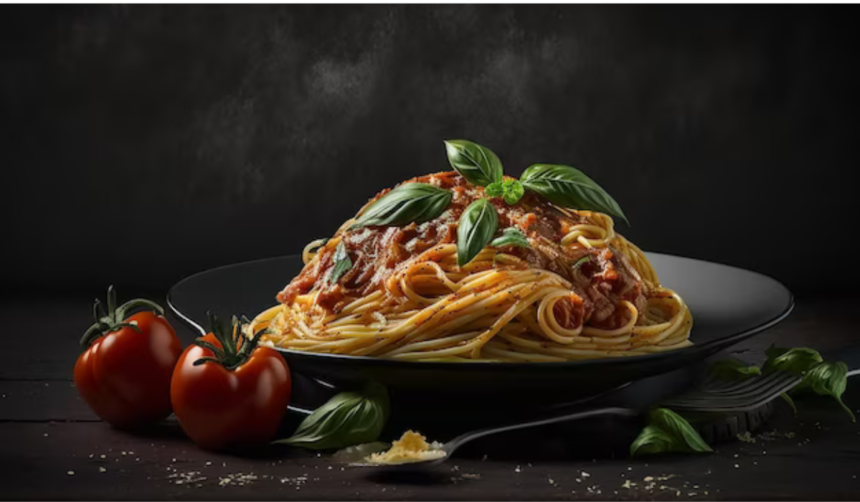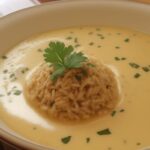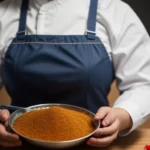When it comes to Italian cuisine, most people immediately think of spaghetti and meatballs. While this classic dish is undeniably delicious, the world of Italian cuisine is vast and diverse, offering a wide array of flavors and ingredients that go far beyond noodles and marinara sauce. From the rich and creamy risottos of the north to the fresh seafood dishes of the south, Italy is a country with a culinary tradition that is as varied as it is delicious. In this article, we will explore the diverse and delectable world of Italian cuisine, taking a closer look at some of the most popular dishes and regional specialties that make this cuisine so unique and beloved around the world.
1. The North: A Land of Rich and Creamy Delights
The northern regions of Italy, such as Lombardy, Piedmont, and Emilia-Romagna, are known for their rich and creamy dishes that are sure to satisfy even the most discerning of palates. One of the most famous dishes from this region is risotto, a creamy rice dish that can be flavored with a variety of ingredients, such as mushrooms, saffron, or seafood. Another popular dish from the north is polenta, a hearty cornmeal dish that can be served soft and creamy or grilled and fried.
2. The South: Fresh and Flavorful Seafood
In contrast to the rich and creamy dishes of the north, the southern regions of Italy, such as Campania, Sicily, and Calabria, are known for their fresh and flavorful seafood dishes. From the world-renowned Neapolitan pizza topped with fresh tomatoes and mozzarella to the fragrant and spicy seafood pasta dishes of the south, the cuisine of this region reflects the bounty of the Mediterranean sea.
3. Pesto: The Famous Sauce from Liguria
Pesto is a famous sauce from the region of Liguria in northern Italy. Made from fresh basil, pine nuts, garlic, olive oil, and Parmesan cheese, pesto is a versatile sauce that can be tossed with pasta, drizzled over grilled vegetables, or spread on crusty bread. Pesto is a perfect example of the simple yet delicious flavors that are characteristic of Italian cuisine.
4. Tiramisu: The Classic Italian Dessert
No discussion of Italian cuisine would be complete without mentioning tiramisu, the classic Italian dessert that has captivated diners around the world. Made with layers of coffee-soaked ladyfingers, creamy mascarpone cheese, and dusted with cocoa powder, tiramisu is a rich and indulgent treat that is sure to satisfy any sweet tooth.
5. Prosciutto and Parmigiano: The Perfect Pair
Prosciutto and Parmigiano are two of Italy’s most famous and beloved food products. Prosciutto is a thinly sliced cured ham that is often served as an antipasto or wrapped around melon for a sweet and savory contrast. Parmigiano, or Parmesan cheese, is a hard, aged cheese that is grated over pasta dishes, risottos, and salads for a nutty and salty flavor. Together, prosciutto and Parmigiano make the perfect pair for a simple yet elegant appetizer.
6. Truffles: The Diamond of Italian Cuisine
Truffles are a highly prized and sought-after ingredient in Italian cuisine. These rare and aromatic fungi are found in the forests of central and northern Italy and are used to flavor a variety of dishes, from creamy risottos to decadent pastas. White truffles, which are harvested in the Piedmont region, are particularly prized for their intense flavor and aroma.

7. Gelato: The Art of Italian Ice Cream
Gelato, the Italian version of ice cream, is a beloved treat that is enjoyed by people of all ages around the world. Made with a lower fat content and less air than traditional ice cream, gelato is known for its rich and creamy texture and intense flavors. From classic flavors like vanilla and chocolate to more exotic options like pistachio and stracciatella, gelato is a delicious and refreshing way to cool off on a hot day.
8. Roman Cuisine: A Taste of History
Rome, the capital city of Italy, is home to a unique and diverse cuisine that reflects the city’s rich history and cultural heritage. From the hearty pasta dishes of the Lazio region to the crispy fried artichokes of the Jewish ghetto, Roman cuisine is a testament to the city’s status as a culinary crossroads. One of the most famous dishes from Rome is cacio e pepe, a simple yet satisfying pasta dish made with pecorino cheese and black pepper.
9. Neapolitan Pizza: The Pride of Naples
Neapolitan pizza is a traditional style of pizza that originated in the city of Naples and is now enjoyed around the world. Made with a thin crust, San Marzano tomatoes, fresh mozzarella cheese, and basil, Neapolitan pizza is cooked in a wood-fired oven at a high temperature, resulting in a crispy and chewy crust with a slightly charred flavor. Neapolitan pizza is protected by the European Union as a Traditional Specialty Guaranteed product, ensuring its authenticity and quality.
10. Sardinian Cuisine: A Taste of the Mediterranean
Sardinia, an island off the coast of Italy, is known for its unique and flavorful cuisine that reflects the island’s isolation and Mediterranean climate. One of the most famous dishes from Sardinia is culurgiones, a type of ravioli filled with potatoes, cheese, and mint. Another popular dish is porceddu, a roasted suckling pig that is seasoned with herbs and cooked over an open flame.
11. Venetian Cuisine: A Taste of the Adriatic
Venice, the historic city of canals and gondolas, is home to a unique and distinctive cuisine that reflects the city’s maritime history and trading routes. From the creamy seafood risottos of the lagoon to the sweet and savory cicchetti, or small plates, of the bacari, Venetian cuisine is a delicious blend of flavors and influences. One of the most famous dishes from Venice is fegato alla veneziana, or Venetian liver, a savory dish of thinly sliced liver cooked with onions and served with polenta.
12. Piedmont: A Land of Truffles and Wine
Piedmont, a region in northwest Italy, is known for its rich and elegant cuisine that is characterized by the use of truffles, mushrooms, and red wine. One of the most famous dishes from Piedmont is bagna cauda, a warm dip made with anchovies, garlic, olive oil, and butter, that is served with fresh vegetables. Another popular dish is brasato al Barolo, a slow-cooked beef stew that is flavored with Barolo wine, a rich and full-bodied red wine from the region.
13. Sicilian Cuisine: A Fusion of Flavors
Sicily, the largest island in the Mediterranean, is a melting pot of flavors and influences that reflect the island’s rich history of conquest and colonization. From the sweet and savory flavors of caponata, a vegetable stew made with eggplant, tomatoes, olives, and capers, to the fresh and aromatic flavors of arancini, deep-fried rice balls stuffed with meat, cheese, and peas, Sicilian cuisine is a delicious fusion of Mediterranean, Arab, and Norman flavors. One of the most famous dishes from Sicily is pasta alla Norma, a pasta dish made with eggplant, tomatoes, basil, and ricotta salata cheese.
14. Calabrian Cuisine: A Spicy and Flavorful Delight
Calabria, a region in southern Italy, is known for its spicy and flavorful cuisine that is characterized by the use of hot peppers, onions, and tomatoes. One of the most famous dishes from Calabria is nduja, a fiery spreadable salami that is made with pork fat, Calabrian chili peppers, and spices. Another popular dish is peperonata, a sweet and sour pepper stew that is flavored with vinegar, sugar, and capers.
15. Emilia-Romagna: The Land of Parmigiano and Prosciutto
Emilia-Romagna, a region in northern Italy, is known for its rich and decadent cuisine that is characterized by the use of Parmigiano cheese, prosciutto, and balsamic vinegar. One of the most famous dishes from Emilia-Romagna is tagliatelle al ragu, a pasta dish made with long, flat noodles and a rich meat sauce that is simmered for hours to develop a deep and complex flavor. Another popular dish is tortellini en brodo, small, stuffed pasta parcels served in a rich and savory broth.
In conclusion,
Italian cuisine is a rich and diverse culinary tradition that offers something for everyone, from the rich and creamy dishes of the north to the fresh and flavorful seafood of the south. Whether you are a fan of classic dishes like risotto and tiramisu or are looking to explore more regional specialties like culurgiones and fegato alla veneziana, Italian cuisine is sure to delight and inspire your taste buds. So the next time you sit down to enjoy a meal, why not go beyond spaghetti and explore the diverse and delicious world of Italian cuisine? Buon appetito!
FAQs about “Beyond Spaghetti: Exploring the Diverse and Delicious World of Italian Cuisine”
- What makes “Beyond Spaghetti: Exploring the Diverse and Delicious World of Italian Cuisine” a captivating exploration of Italian food? “Beyond Spaghetti” offers a comprehensive journey through the multifaceted world of Italian cuisine, delving into lesser-known regional specialties, culinary traditions, and ingredients that go beyond the stereotypical pasta dishes.
- Which aspects of Italian cuisine are covered in this book? This book covers a wide range of aspects of Italian cuisine, including regional variations, traditional ingredients, cooking techniques, and cultural influences. It provides readers with a nuanced understanding of the diversity and richness of Italian gastronomy.
- Are specific Italian dishes featured in this culinary exploration? Yes, “Beyond Spaghetti” features a curated selection of Italian dishes beyond the ubiquitous spaghetti, including regional classics like risotto from Lombardy, polenta from Veneto, and arancini from Sicily. Each dish is accompanied by background information, cultural insights, and tips for preparing it authentically.
- How does this book showcase the regional diversity of Italian cuisine? This book celebrates the regional diversity of Italian cuisine by highlighting dishes from different parts of Italy. From the Alpine regions of the North to the sun-drenched coasts of the South, readers will discover the distinct flavors and culinary traditions that characterize each region.
- Can readers expect to gain insights into the cultural heritage of Italian cuisine in this book? Absolutely! “Beyond Spaghetti” delves into the cultural heritage of Italian cuisine, exploring its historical roots, influences, and significance in Italian society. Readers will learn about the traditions, rituals, and customs associated with Italian culinary heritage, providing a deeper appreciation for the food culture of Italy.
Advantages:
- Intriguing title: “Beyond Spaghetti: Exploring the Diverse and Delicious World of Italian Cuisine” immediately grabs the reader’s attention by suggesting that Italian cuisine is more than just spaghetti, inviting them to explore the breadth and depth of Italian culinary traditions.
- Culinary exploration: The title promises readers an exploration of the diverse offerings of Italian cuisine, showcasing a wide variety of dishes beyond the stereotypical pasta dishes, providing a comprehensive overview of Italian culinary landscape.
- Cultural immersion: By emphasizing the diversity of Italian cuisine, the title offers readers insights into the cultural, regional, and historical influences that shape Italian cooking, fostering a deeper appreciation for Italian culture.
- Practicality: By focusing on Italian cuisine, the title appeals to readers interested in exploring authentic and delicious Italian dishes, providing them with recipes, tips, and techniques to recreate the flavors of Italy in their own kitchens.
- Inspiration for dining: The title may inspire readers to seek out new Italian dishes at restaurants or attempt to cook them at home, encouraging culinary exploration and appreciation of Italian food beyond the familiar spaghetti dishes.
Disadvantages:
- Potential oversimplification: While the title emphasizes moving beyond spaghetti, it may oversimplify the richness and complexity of Italian culinary traditions, overlooking lesser-known but equally delicious dishes and regional specialties.
- Lack of specificity: The title does not specify which dishes will be explored or which regions of Italy will be covered, leaving readers uncertain about the scope of the content.
- Accessibility of ingredients: Some Italian dishes may require specific ingredients that are difficult to find outside of Italy or major culinary hubs, limiting the practicality of the recipes for some readers.
- Dietary restrictions: Italian cuisine often includes ingredients like cheese, cured meats, and wheat-based products, which may not be suitable for individuals with dietary restrictions or preferences, potentially alienating some readers.
- Cultural appropriation: Without proper context and understanding, celebrating Italian cuisine could risk appropriating cultural elements without acknowledging their significance or respecting their origins.
















